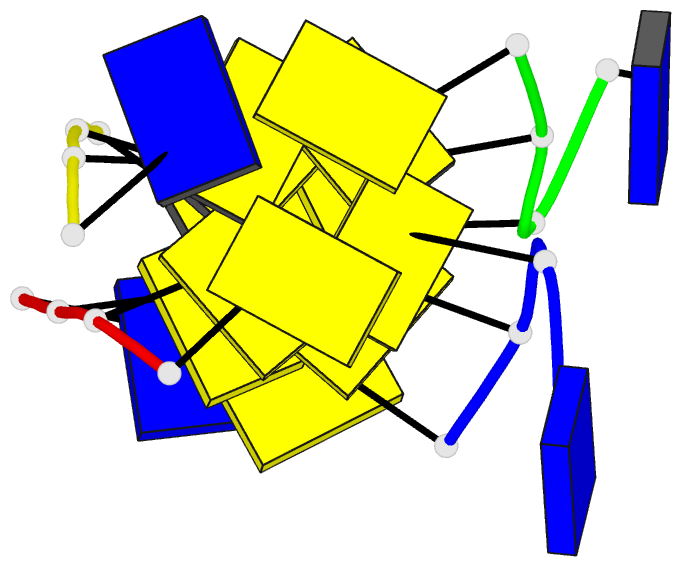Summary information and primary citation
- PDB-id
-
191d;
SNAP-derived features in text and
JSON formats
- Class
- DNA
- Method
- X-ray (1.4 Å)
- Summary
- Crystal structure of intercalated four-stranded
d(c3t)
- Reference
-
Kang CH, Berger I, Lockshin C, Ratliff R, Moyzis R, Rich
A (1994): "Crystal
structure of intercalated four-stranded d(C3T) at 1.4
angstroms resolution."
Proc.Natl.Acad.Sci.USA, 91,
11636-11640. doi: 10.1073/pnas.91.24.11636.
- Abstract
- The crystal structure of d(C3T), solved at 1.4 A
resolution, reveals that the molecule forms a four-stranded
intercalated complex. It consists of two parallel-stranded
duplexes, each of which is held together by
cytosine-protonated cytosine base pairs. The two duplexes
are intercalated with each other and have opposite strand
orientation. The molecule has a flat, lath-like appearance,
and the covalently bonded cytosines have a slow
right-handed twist of 17.1 degrees. However, there is
considerable asymmetry. On one of the flat sides, the
phosphate groups are rotated away from the center of the
molecule. They are held in this orientation by bridging
water molecules that bind the NH of cytosine and a
phosphate group of an opposite chain. There is also
considerable microheterogeneity in the structure. The
cytosine hemiprotonation occurs even at pH 7 where stable
crystals form.





